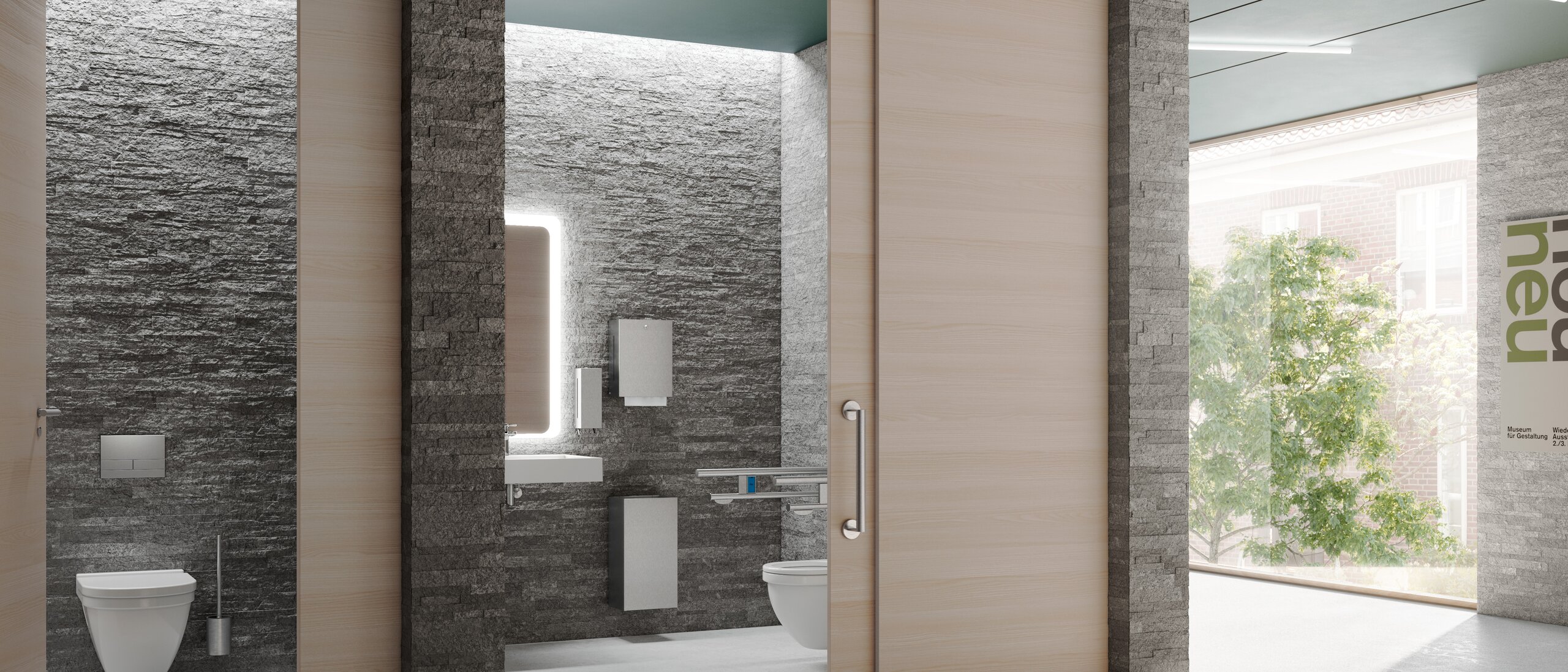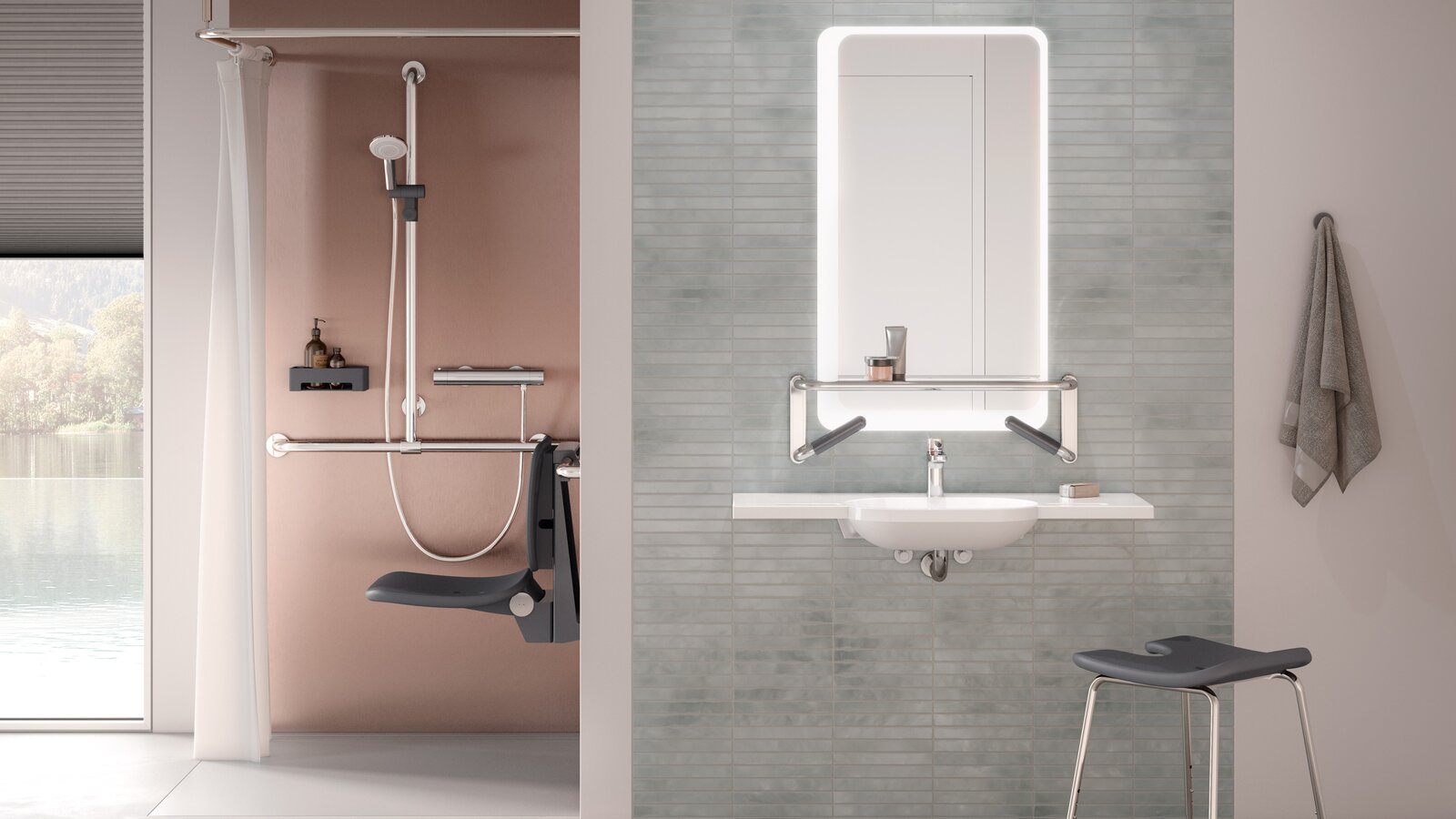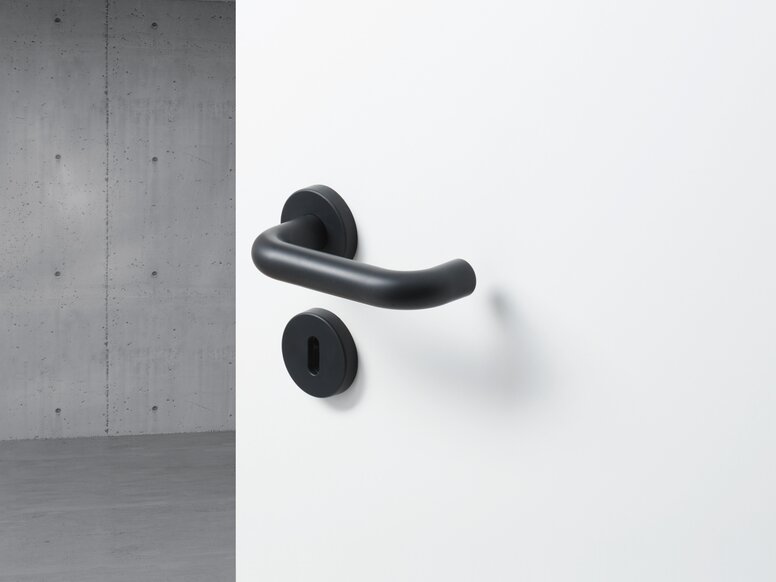Barrier-free building: Focus on inclusion and sustainability
Discover the latest trends and solutions in the field of barrier-free construction. As an architect or planner, you play a crucial role in creating inclusive spaces. Learn which DIN standards are relevant for barrier-free buildings and how you can utilise funding opportunities.
You will find the following content in this guide to barrier-free building:
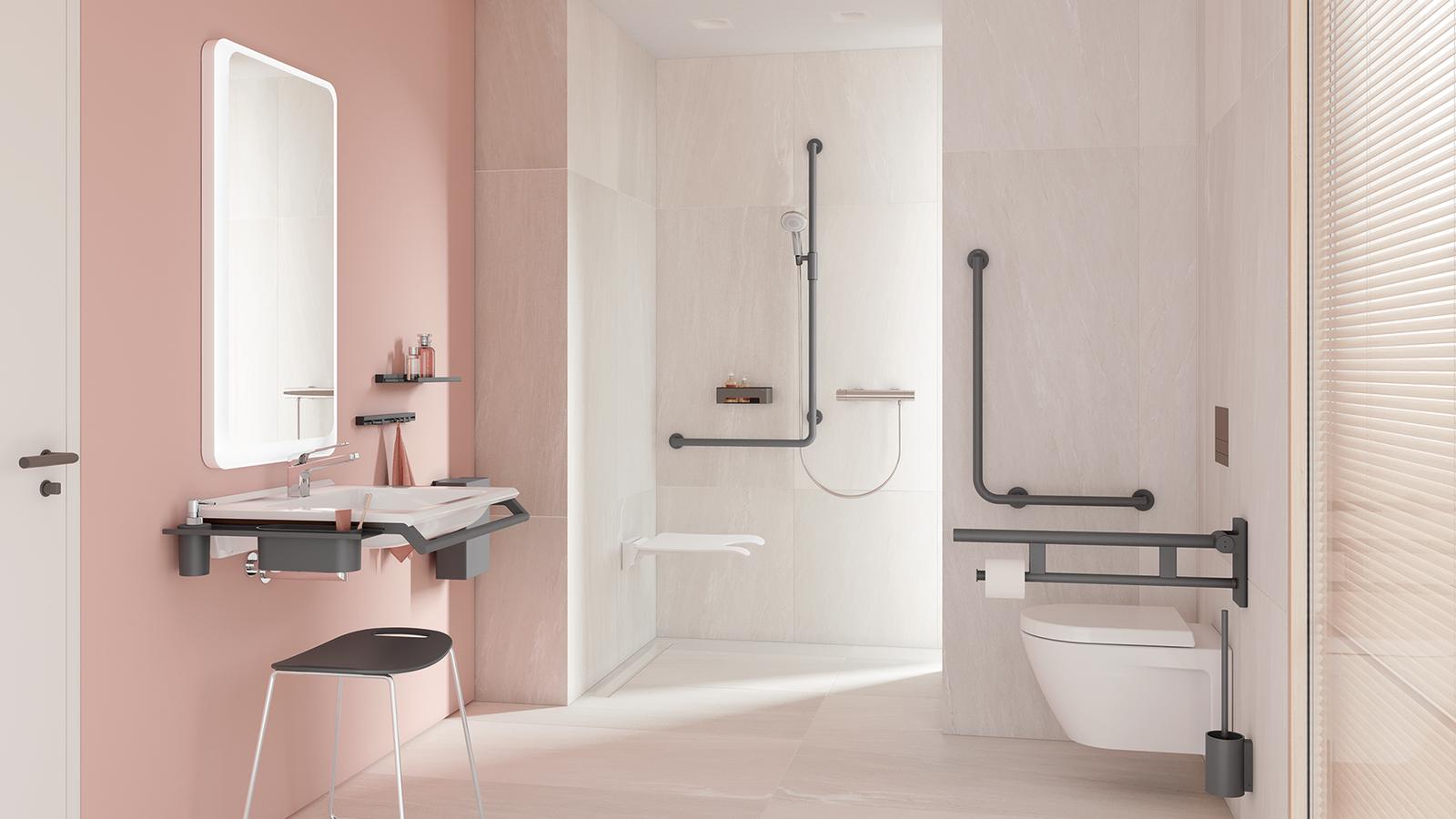
Definition of “barrier-free”
In construction, a building or element is barrier-free when it allows unrestricted accessibility for people with different abilities. This includes physical, sensory and cognitive aspects. Your goal as a planner and architect is to create an environment in which every person can move freely and independently. Barrier-free building is an expression of respect for human dignity and equal participation for all.
Barrier-free building: Advantages for users and operators
- Improved quality of life for people with reduced mobility
- Expanded target group: Elderly people, families with children and those with temporary limitations also benefit
- Attractiveness and competitive advantages for building operators
- Legal security and economic advantages
- Social responsibility and sustainability
Overall, accessible construction is a way to reflect human values and social progress. Create spaces that are not only functional but also welcoming, supportive and nurturing – a foundation for an inclusive and sustainable future.
Barrier-free building in practice
Barrier-free concept: Consider needs in the planning phase
During the planning of an accessible building, consider in detail the needs and requirements of the different users. These may have physical, sensory or cognitive limitations. Senior citizens, people with disabilities and parents with children are just a few examples. A multidisciplinary team of architects, planners and accessibility experts should be involved from the beginning to conduct a comprehensive needs assessment.
Assessment of site infrastructure and access
The site infrastructure plays a crucial role in accessibility. Terrain characteristics, public transport connections and environmental conditions influence the planning of access routes and development areas. Therefore, carry out a comprehensive assessment to find optimal solutions that ensure accessibility for all.

Barrier-free ramps: Building entrances and access
The access to the building is of central importance. Design ramps with a gentle slope and in such a way that people in wheelchairs or with walking aids can use them easily. Lifts must be large enough for wheelchairs and easily accessible. Wheelchair spaces in meeting rooms and venues should be adequately sized to ensure comfort and visibility.
Barrier-free communication and information
Clear signage and information are essential for user orientation. High-contrast colours, large fonts and clear pictograms facilitate readability. Tactile signage and tactile plans support people with visual impairments. Inductive hearing aids offer people with hearing disabilities the opportunity to perceive information.

Accessibility as an integral part of the overall planning
Consider accessibility as a central element of the overall planning from the very beginning. It is not sufficient to add barrier-free elements afterwards. Instead, you should integrate them seamlessly into the overall design. This concerns both the physical architecture and the design of the interior spaces.

Barrier-free planning of interior space and equipment
Consider sufficient movement space for wheelchairs and walking aids when designing the interior. Non-slip floor coverings ensure safety, especially in areas that can potentially get wet. The arrangement of furniture and facilities should allow users to move around easily. Height-adjustable work surfaces, washbasins and controls ensure that different users can use them comfortably.

Safety and emergency management: Fire protection measures and barrier-free escape routes
The safety of all users has the highest priority. Fire safety measures must take into account the needs of people with disabilities, from alarm to evacuation. Barrier-free escape routes must be clearly marked and accessible without obstacles. Place emergency devices and communication systems in such a way that they are accessible to all users.

Quality control and testing: Checking accessibility
Compliance with accessibility standards must be monitored throughout the construction phase. Cooperation with certified experts and accessibility professionals is important to ensure that the planned measures are properly implemented. Plan for extensive testing and inspection before completion to ensure that the building actually provides the accessibility that was intended.
DIN barrier-free building: Standards to be complied with
Compliance with DIN standards is crucial to ensure accessibility. Here are some of the most important standards:
- DIN 18040 Parts 1 and 2: Planning principles for barrier-free building.
- DIN 18025 Parts 1 and 2: Barrier-free homes.
- DIN 18024 Parts 1 and 2: Barrier-free workplaces.
DIN 18040: Barrier-free building
DIN 18040 sets out the basic requirements for the planning and execution of buildings accessible to the public. Its main objective is to ensure accessibility for all people, regardless of their individual abilities or impairments. The standard covers various aspects, including ramps, lifts, stairs, escape routes, sanitary facilities, signage, etc. DIN 18040 acts as a guideline for architects, planners and builders to ensure that buildings are accessible for all people.
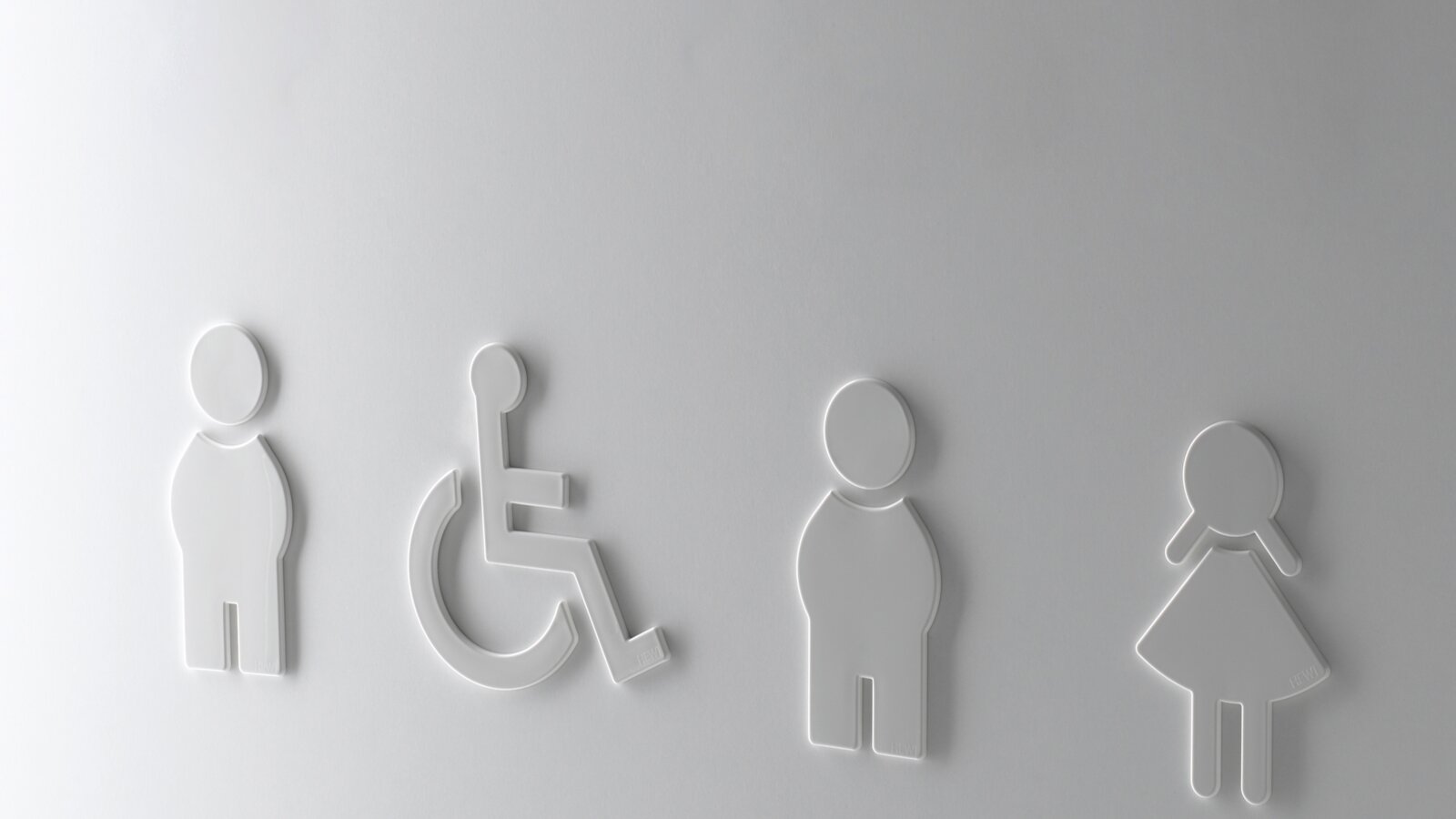
DIN 18040-2 Barrier-free homes
In addition to DIN 18040-1, DIN 18040-2 defines the specific requirements for barrier-free dwellings. This standard focuses on how living spaces can be designed to enable independent living for people with different disabilities. It includes requirements for doors, corridors, kitchens, bathrooms and other areas within a dwelling. It helps to create homes that offer a high level of comfort and independence, regardless of the individual abilities of the residents.
DIN 32984: Further standards for barrier-free building
In addition to the standards mentioned above, there are a large number of other standards and guidelines that cover specific aspects of barrier-free construction. DIN 32984, for example, deals with tactile guidance systems that help people with visual impairments find their way around. It sets requirements for the design and placement of floor indicators in public spaces to ensure safe routes through buildings and outdoors. DIN 32975 deals with visual information that is important for people with hearing impairments or cognitive limitations. These standards are indispensable tools to ensure that accessible buildings actually meet the needs of a diverse user base.
Compliance with these standards ensures that buildings actually provide the accessibility they promise and contribute to the creation of inclusive and equitable spaces. Use these standards as a basis to ensure that your designs meet the highest standards of accessibility.
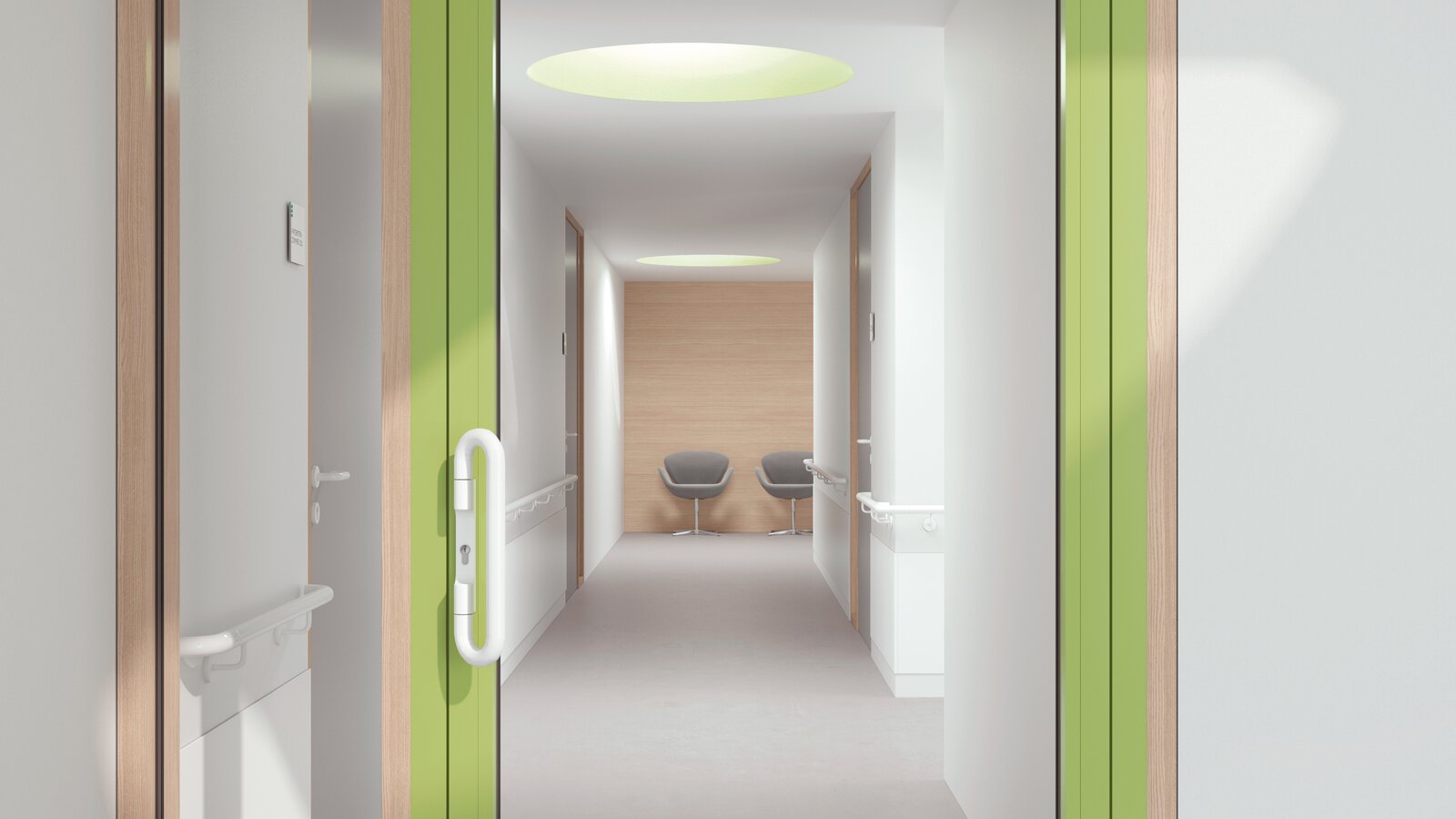
Barrier-free doors: Door thresholds and door openers
Requirements for door thresholds in barrier-free entrances
When designing barrier-free entrances, the height of the door thresholds is of crucial importance. Low door thresholds allow a seamless transition between indoor and outdoor areas and facilitate smooth access for people in wheelchairs or with walking aids. A threshold-free entryway minimises the risk of tripping accidents and facilitates movement for all users.
AUTOMATIC DOOR OPENERS AND THEIR ADVANTAGES
The integration of automatic door openers improves accessibility to a building. They make it easier for all users to open heavy doors, not just those with limited mobility. For this purpose, the operation of automatic door openers should be simple, intuitive and user-friendly, for example via buttons, sensors or motion detectors.
Fire protection Escape route regulations
Fire protection measures and evacuation concepts
Safety in accessible buildings requires careful consideration of the needs of people with physical disabilities. Implement fire safety measures in such a way that they enable evacuation for all users, regardless of their mobility or sensory abilities. Escape routes must be free of obstacles and rescue facilities should be easily accessible. Evacuation concepts should aim to ensure safe and quick evacuation for every person in the building, taking individual needs into account.
LIGHTING AND CONTRASTS FOR BETTER ORIENTATION
Appropriate lighting and the use of contrasts are crucial for orientation in accessible buildings. Well-placed lighting not only creates a pleasant atmosphere, but also makes it easier to perceive paths, doors and danger spots. Contrasts, both visual and tactile, help people with visual impairments to move safely through the space. Clear, well-lit escape routes support rapid evacuation in an emergency.
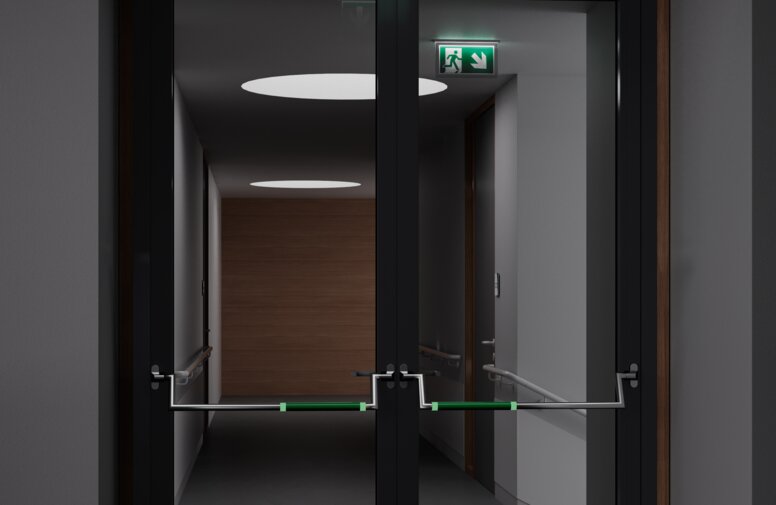
TECHNICAL AIDS FOR THE SAFETY OF USERS
Modern technologies play an important role in increasing safety in accessible buildings. Easily accessible emergency call systems enable quick communication. This also includes alarm devices that are connected to other security systems in the building. These technical aids not only provide protection, but also convey a sense of security and independence for the building's occupants.
Accessible bathrooms: Components and equipment
Barrier-free shower with non-slip surface
An important area in an accessible building is the bathroom. Floor-level showers are one of the most important components. Having a shower tray that is flush with the floor minimises the risk of tripping accidents and makes it easier to enter and leave the shower, especially for people with limited mobility. Non-slip surfaces provide good grip even in wet environments, which significantly reduces the risk of falls.
Height-adjustable toilet and washbasin
Tailor accessible bathrooms to the individual needs of the users. Height-adjustable washbasins and toilets allow flexibility in adapting the height to requirements. This is particularly advantageous for wheelchair users or older people with physical limitations.
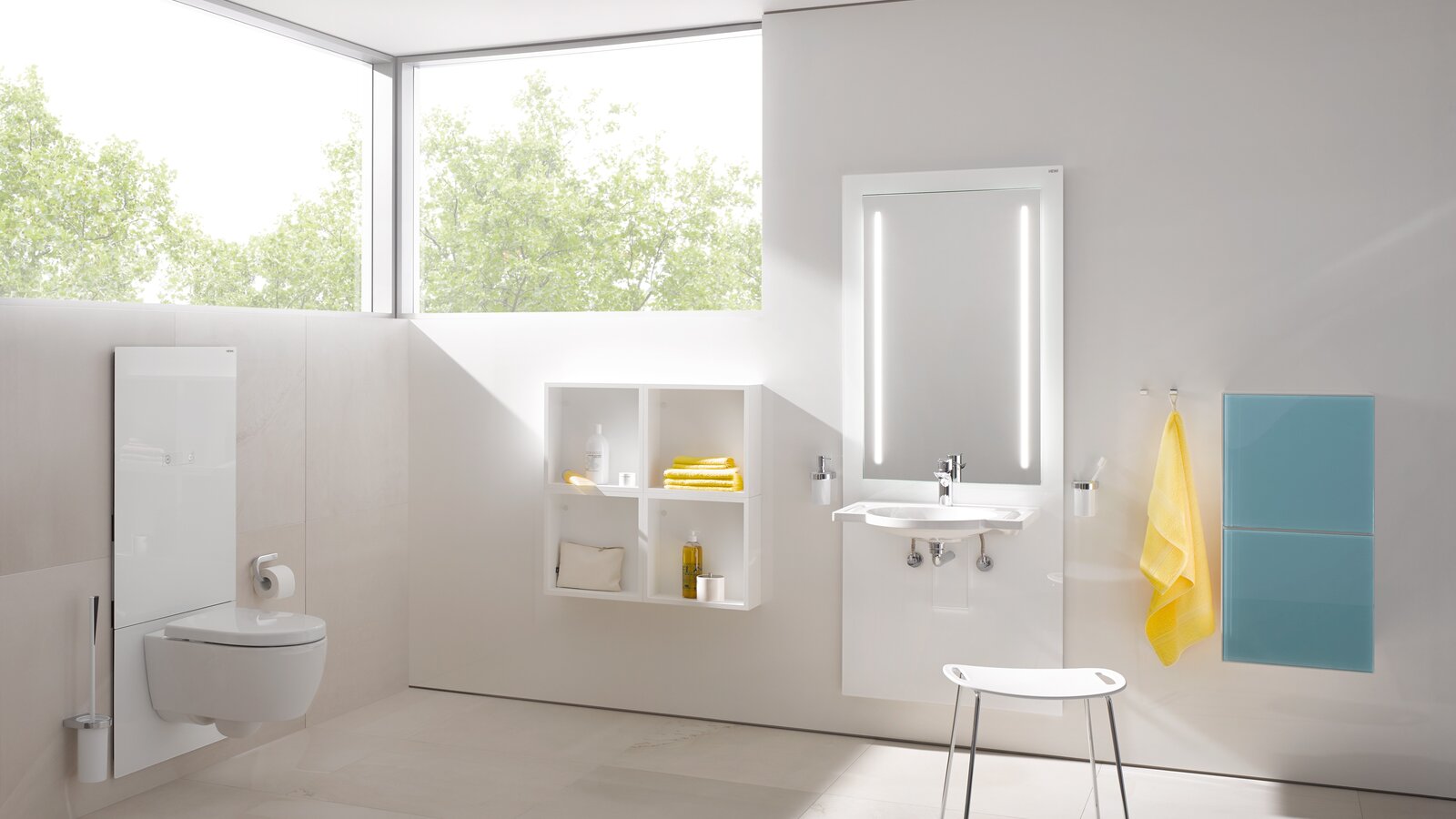
Grab rails and hinged support rails
Support rails are an indispensable addition for barrier-free bathrooms. They provide support and stability when sitting down, standing up and moving around the room. Support rails should be placed in showers, next to toilets and in other strategic places. Hinged support handles are a space-saving solution that can be folded up as required and therefore do not take up additional space.
Emergency call systems and alarm devices
Emergency call systems allow people to call for help quickly in an emergency. Integrate these systems either discreetly into the room design or as clearly visible elements. Such systems help to ensure that accessible bathrooms are not only comfortable, but also safe.
The accessible bathroom is a central area in any accessible building, as it requires a high level of functionality and safety. The integration of floor-level showers, height-adjustable facilities, support rails and emergency call systems ensures that the bathroom meets the needs of all users.
Further information on the design of barrier-free bathrooms can be found here:
Funding for barrier-free building
Barrier-free construction KfW
The KfW (Kreditanstalt für Wiederaufbau) offers many funding programmes that provide financial support for barrier-free building. These programmes cover not only new buildings, but also modernisations and conversions of existing buildings to make them barrier-free. The funding can be used for measures such as the installation of lifts, the conversion of sanitary facilities, the removal of barriers and much more. KfW's funding programmes are a valuable resource for reducing the financial burden of barrier-free construction and promoting the creation of inclusive buildings.
Funding programmes of the federal states and municipalities
In addition to the nationwide KfW funding programmes, many federal states and municipalities also offer their own funding opportunities for barrier-free construction. These regional programmes can provide additional financial support and take into account specific requirements and needs of the respective region. They include grants, loans with low interest rates or tax benefits. Taking advantage of these regional funding programmes can help make the implementation of accessible projects financially feasible.
BARRIER-FREE BUILDING: OTHER FUNDING OPPORTUNITIES
In addition to government funding programmes, various organisations and foundations offer support for barrier-free building. These can range from non-profit organisations to foundations to disability associations. These funding opportunities include financial resources, advisory services, technical support or training. Working with such organisations can not only provide financial support, but also represent a valuable resource and source of expertise for the implementation of accessible projects.
The availability of these diverse funding opportunities demonstrates the growing awareness of the importance of accessibility and inclusion in the building sector. You should therefore regularly inform yourself about different funding programmes and choose the ones that best suit your project.
Summary of the most important points
- Barrier-free building enables the participation and independence of people with limited mobility.
- Architects and planners should follow guidelines and relevant DIN standards to achieve optimal accessibility.
- The barrier-free bathroom requires specific components and equipment.
- Door thresholds and door openers play a decisive role for the accessibility of buildings.
- Safety in barrier-free buildings should be ensured by appropriate measures.
- By taking these aspects into account, a higher quality of life is created for all users.
This guide provides a comprehensive overview of the essential aspects of barrier-free construction. By implementing these principles and standards, you as an architect or planner actively contribute to creating inclusive and sustainable buildings that are accessible to all.
HEWI planning service
Do you need support with barrier-free construction? Our planning service is free of charge for you as an architect or planner. Contact us, we will be happy to support you with your next building project.
